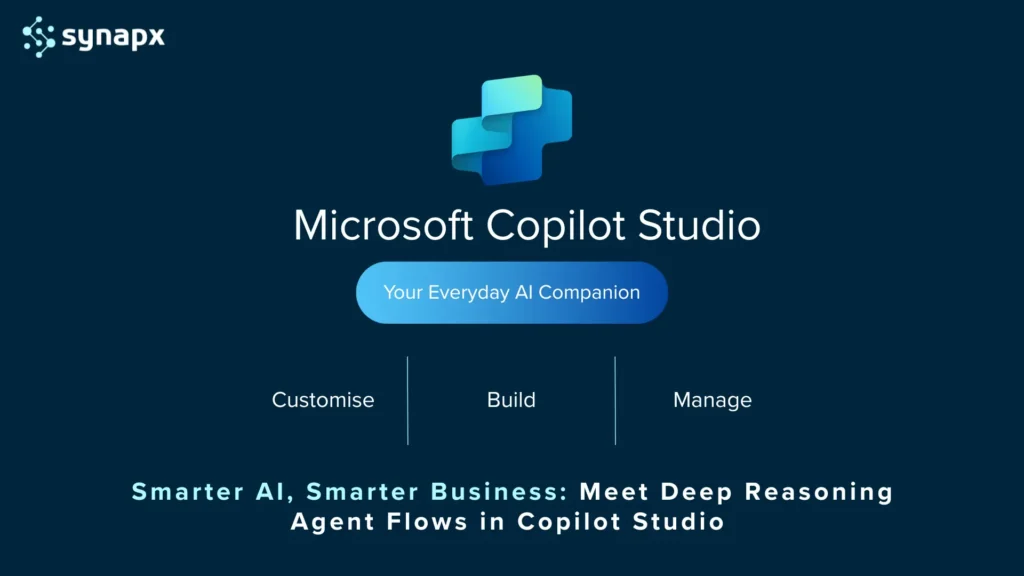Power Automate, formerly known as Microsoft Flow, is a critical component of the Microsoft Power Platform and is designed to automate workflows between apps and services. It’s a powerful tool for streamlining business processes, improving efficiency, and enabling users to focus on more strategic tasks by automating repetitive, manual tasks. This automation can range from simple tasks, like notifications and content management, to complex business processes.
Automating workflows is a crucial aspect of modern business operations and is a key component of digital transformation strategies in organisations. By automating routine and time-consuming tasks, businesses can significantly reduce the time spent on these activities. This allows employees to focus on more valuable, strategic work rather than getting bogged down in administrative tasks.

How It Works
Triggers: Every workflow in Power Automate starts with a trigger, which is an event that initiates the workflow. For example, a trigger could be receiving an email, a new row being added to a database, or a specific date/time.
Actions: After a trigger event occurs, Power Automate executes one or more actions. These are tasks that the workflow performs automatically, such as sending an email, creating a file, or updating a database record.
Logic and Conditions: You can add conditions and logic to these actions, such as branching, loops, and condition checks. This enables the creation of complex workflows that can make decisions, perform different actions based on criteria, or repeat actions multiple times.
No-Code Solution
Power Automate’s low-code approach is designed to make workflow automation accessible to a broader range of users, including those who may not have extensive programming skills. This approach significantly lowers the barrier to entry for creating and managing automated workflows.
Power Automate features an intuitive graphical user interface (GUI) where users can visually design their workflows. This interface typically includes drag-and-drop functionality, allowing users to ‘draw’ their workflows by selecting and arranging pre-built actions and triggers. Users can implement logic in workflows through conditional statements, loops, and branches by configuring them in the GUI, rather than writing them in code. This is similar to setting up rules in an email client or creating complex formulas in Excel.
While Power Automate provides many ready-to-use components, it also allows for customisation. Users can modify existing templates or create new workflows that suit their specific needs, often with minimal or no coding. Power Automate is ideal for:
Business Analysts and Non-Technical
Individuals who understand their business processes well but may not have coding skills can use Power Automate to automate workflows and improve efficiency.
IT Professionals and Developers
They can use Power Automate to quickly develop solutions and to prototype complex workflows before committing to a more intensive development process.
Small to Medium Businesses
SMBs that may not have large IT departments can benefit from Power Automate’s low-code approach to automate processes without needing extensive technical resources.
When the automation needs involve complex logic, data transformations, or integration with multiple systems, a Power Automate consultancy can provide the expertise to design these efficiently. If your business uses specialised software that isn’t covered by Power Automate’s existing connectors, a consultancy can develop custom connectors to integrate these systems. They can also provide support for implementing advanced features or custom code within Power Automate, which might be necessary for specific business requirements.
Synapx also provides Power Automate training for your staff in using Power Automate effectively and to help with the strategic implementation of automation in your business processes.
Integration Capabilities
Power Automate’s integration capabilities are a cornerstone of its effectiveness, enabling businesses to connect and automate actions across a wide range of applications and services. This seamless integration not only enhances productivity but also creates a more interconnected and efficient digital ecosystem.
Integration with Existing Microsoft Products:
Office 365 Integration: Power Automate integrates deeply with Office 365 applications like Outlook, Excel, and Teams. For instance, you can automate tasks such as saving email attachments to OneDrive, syncing events between Outlook and Google Calendar, or updating Excel sheets based on form responses.
Dynamics 365: For organisations using Dynamics 365, Power Automate can synchronise data and automate actions across both platforms. This could involve creating workflows that automatically update customer records in Dynamics 365 based on interactions logged in other applications.
SharePoint: Power Automate is commonly used to automate document handling and list management in SharePoint, such as automatically moving documents based on their status or sending notifications when items in a list are updated.
Microsoft Teams: Automations can enhance collaboration in Teams, like automatically posting messages in channels based on specific triggers or integrating data from other business apps into Teams for consolidated reporting.
Integration with Other Power Platform Tools:
Integrating Power Automate with the Microsoft Power Platform significantly enhances its capabilities, making it an even more powerful tool for businesses. The Power Platform, which includes Power BI, Power Apps, Power Pages, and Power Automate is designed to work seamlessly together, providing a comprehensive suite of tools that empower businesses to analyse data, build solutions, automate processes, and create virtual agents.
Power BI: Workflows can be created in Power Automate to trigger actions based on insights generated in Power BI. For example, sending alerts or initiating workflows when certain metrics reach predefined thresholds.
Power Apps: Power Automate can run flows in response to actions taken in custom apps built with Power Apps. This integration enables complex business processes to be automated seamlessly behind the scenes of a custom app.
Power Pages: Power Pages, used for creating websites, can integrate with Power Automate to automate processes based on user interactions on these websites. For example, when a user submits a form on a Power Pages site, Power Automate can trigger a workflow to process this information, such as updating records in a database or sending email notifications.
In essence, the integration of Power Automate within the Microsoft Power Platform creates a synergistic effect, where the combined capabilities of each component result in a more powerful and comprehensive solution than each would offer individually. This seamless integration enables businesses to streamline their operations, drive innovation, and respond more effectively to their dynamic needs.
Integration with External Services Through APIs:
Power Automate is not limited to connecting with only Microsoft products. While it does offer deep integration with Microsoft services like Office 365, Dynamics 365, SharePoint, and Microsoft Teams, one of its major strengths is its ability to connect with a wide range of non-Microsoft services and applications.
Pre-Built Connectors: Power Automate offers over 400 pre-built connectors for various services and applications, including popular cloud services like Salesforce, Google Workspace, Twitter, and more. These connectors make it easy to interact with these services without needing to understand their underlying API.
Custom Connectors: If a specific service you need to integrate with isn’t already covered by an existing connector, Power Automate allows you to create custom connectors. This feature enables businesses to connect to any service with an accessible API, significantly expanding the platform’s capabilities. This capability significantly broadens the scope of what can be achieved with Power Automate, enabling it to work with virtually any modern web service.

API-based Integration: Power Automate can interact with external APIs, allowing workflows to pull data or push data to external systems. This is particularly powerful for integrating with custom-built internal systems or less common third-party services.
By connecting various applications, Power Automate reduces manual data entry and the risk of errors, ensuring data consistency across platforms. Integration with real-time data sources enables businesses to react swiftly to changes, enhancing responsiveness and decision-making. The ability to create custom connectors and interact with APIs means that virtually any system, no matter how niche or specialised, can be integrated into your automated workflows.
When to Consider Using a Power Automate Consultancy
Creating custom connectors and integrating APIs in Power Automate can range from straightforward to complex, depending on the specific requirements and technical details of the service you’re integrating with. Building custom connectors or using APIs directly often requires a good understanding of web services, authentication mechanisms, and API protocols like REST. It also involves handling data formats like JSON or XML and knowing how to interpret API documentation.
These tasks typically require skills in software development or at least a technical background. If you have team members who are comfortable with these technologies, they might be able to handle this internally. Moreover, beyond creation, these connectors and integrations need to be tested and maintained, particularly as APIs evolve or change over time.
If your team does not have the necessary skills or if they are already occupied with other critical tasks, it’s beneficial to engage a Power Automate consultancy. For complex integrations, especially where advanced data transformation or custom business logic is required, a consultancy’s expertise can be invaluable.
Synapx Managed RPA Solutions
Synapx Managed RPA is using Robotic Process Automation (RPA) to extend the functionality of Power Automate. RPA can be used to automate tasks in applications where API-based integration is not possible or practical. This is particularly useful for legacy systems or specialised software without API access.

- RPA can bridge the gap in automation where APIs are not available, by mimicking user interactions with the software.
- By combining RPA with Power Automate, Synapx can potentially offer more comprehensive automation solutions, covering a wider range of scenarios.
- RPA extends the functionality of Power Automate, enabling it to interact with virtually any system, including those with no built-in support for automation.
In summary, while creating custom connectors and API-based integrations can be technically challenging, they are feasible with the right expertise. A consultancy like Synapx, with its Managed RPA offering, can provide a robust solution for more complex automation needs, particularly when dealing with systems that lack API accessibility. This approach can significantly enhance the scope and effectiveness of your automation strategy using Power Automate.
Conclusion
In summary, Power Automate presents a compelling proposition for businesses looking to increase efficiency, reduce errors, save costs, improve speed, scale operations, and make data-driven decisions. These benefits collectively address a range of operational challenges, making Power Automate a valuable investment for businesses aiming to optimise their processes and stay competitive in the modern marketplace.



